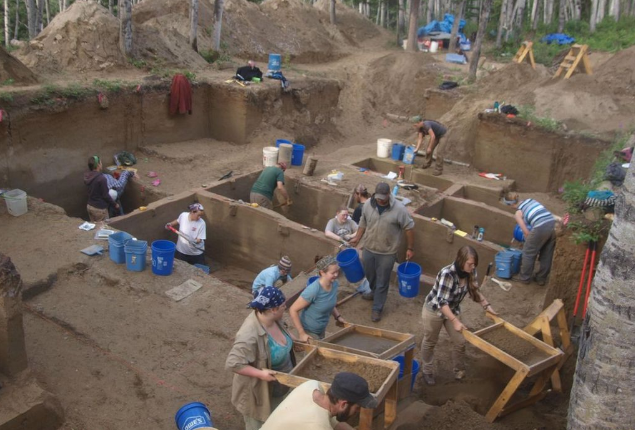An Alaskan infant's DNA tells story of 'first Americans'
;
The genes that rewrite American pre-history: Ancient DNA reveals how the first humans arrived on the continent in ONE wave more than 25,000 years ago and then split into three ancestral Native American groups The 11,500-year-old remains of an infant girl from Alaska have shed new light on the peopling of the Americas.Genetic analysis of the child, allied to other data, indicates she belonged to a previously unknown, ancient group.
- She was part of a previously unknown group known as the 'Ancient Beringians'
- This small clan mostly resided in Alaska and died out around 6,000 years ago
- Study reveals human arrived in North America from Russia 25,000 years ago
- They then split into three Native American groups, including Ancient Beringians
- The team's findings represent a major shift in scientists' theories about how humans populated North America
Study looked at the DNA of a Native American infant who died 11,500 years ago.Scientists say what they have learnt from her DNA strongly supports the idea that a single wave of migrants moved into the continent from Siberia just over 20,000 years ago.Lower sea-levels back then would have created dry land in the Bering Strait.It would have submerged again only as northern ice sheets melted and retreated. It is widely accepted that the earliest settlers crossed from what is now Russia into Alaska via an ancient land bridge spanning the Bering Strait which was submerged at the end of the last Ice Age.Issues such as whether there was one founding group or several, when they arrived, and what happened next have been the subject of extensive debate.Some scientists previously hypothesized about multiple migratory waves over the land bridge as recent as 14,000 years ago."These are the oldest human remains ever found in Alaska, but what is particularly interesting here is that this individual belonged to a population of humans that we have never seen before," explained Prof Willerslev, who is affiliated to the universities of Copenhagen and Cambridge."It's a population that is most closely related to modern Native Americans but is still distantly related to them. So, you can say she comes from the earliest, or most original, Native American group - the first Native American group that diversified. It also shows that a previously undiscovered group named the 'Ancient Beringians' formed as part of this split, taking the known number of ancestral Native American groups from two to three. The new study points to the existence of an ancestral population that started to become distinct genetically from East Asians around 36,000 years ago, and which had completed the separation by 25,000 years ago - indicative of the Bering land bridge connecting Siberia and Alaska having been crossed.The analysis further suggests that USR1 and her fellow Ancient Beringians then subsequently diverged from the incomers by staying in Alaska for several thousand years.
CONCLUSION
That is complicated case of the north-west American state because its acidic soils are unfavorably due to preservation of skeletons and in particular their DNA material.

